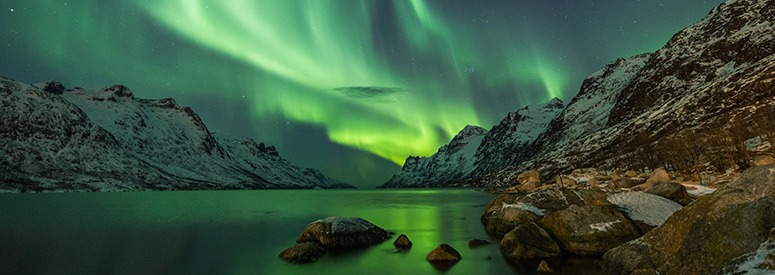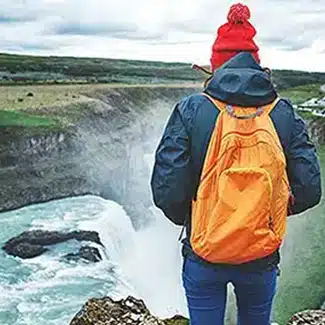Precipitation on the island peaks from October to February, with the southern and western parts receiving the most rainfall. The north, east, and interior regions have colder winter temperatures but warmer summers and less snow and rain. You will quickly learn that Iceland’s most influential element is the wind; in fact, the Icelandic language has around 156 words to describe the wind!
SPRING – April, May
The spring is an excellent time for whale-watching and seeing migratory birds. Not only is spring a beautiful time to visit Iceland, but airfare is also a little cheaper due to it being a less-popular tourist season. There’s a little less rain, but Iceland is still a wet place so you’ll need your rain jacket and a windproof travel umbrella. Good waterproof hiking shoes are crucial, and quick-dry active fabrics are ideal.
Be sure to plan for rapidly fluctuating temperatures which can vary from quite cold to relatively comfortable. Tee shirts and light sweaters for layering are perfect, plus wool socks and a moisture-wicking scarf.
Temperatures average from 30°F to 40°F (-1°C to 4°C).
SUMMER – June, July, August
Certain parts of the summer see 24 hours of daylight. Summer is the high-season for tourism in Iceland, so if you want to skip the crowds, consider travelling in the spring or fall. If you are set on visiting in this season, keep in mind you will need to book accommodations and your car rental months in advance and plan for higher prices.
Summer in Iceland still isn’t very warm. Weather can change rapidly so prepare for anything by wearing comfortable layers and bringing a good rain jacket. Convertible quick-drying trousers are a perfect choice. A moisture-wicking scarf is always a good idea to keep moisture off of your skin, and active leggings and shirts are best when there’s a possibility you’ll be sweating from activities. Be sure to opt for waterproof hiking boots.
Temperatures average from 45°F to 55°F (7°C to 13°C).
FALL – September, October
Autumn begins Iceland’s off-season. During this time, there are fewer tourists and the landscape is marked with vivid colour changes in the local vegetation.
September is when the Northern Lights start making their appearance. If you want to chase the Lights, head north to Húsavík.
Fall is a great time to visit Iceland, as many of the summer tourists have left, accommodations are easier to find, and the landscape is absolutely beautiful.
To best enjoy this season, you’ll need to be prepared for anything. Convertible quick-dry trousers, a travel towel, and a rain jacket are must-haves. A windproof travel umbrella is an Iceland staple – the country is known for its wind. Jeans aren’t ideal since they take forever to dry, but active pants are a good alternative. Light gloves and a hat are good to have, and a moisture-wicking scarf is essential. A convertible coat is nice to bring so that you can adapt your warmth based on the weather.
Temperatures average from 35°F to 45°F (2°C to 7°C).
WINTER – November, December, January, February, March
During the winter months, you can often find package deals that include flights and accommodations but be aware that the country is not as easy to drive around, which may hinder your exploration. Many roads become closed in the winter, so driving in Iceland during this time is no joke.
You will want good waterproof trousers and boots for this season, as moisture on your skin can quickly lead to extreme discomfort and even dangerous health conditions like frostbite or hypothermia. To help prevent this, you should also bring moisture-wicking scarves, good active leggings and shirts, and layers that can easily be added or removed to suit your comfort and to prevent sweating. Don’t forget a heavier convertible coat, good gloves, a winter hat or two, and wool socks galore!
Temperatures average from 25°F to 35°F (-4°C to 2°C).



































































